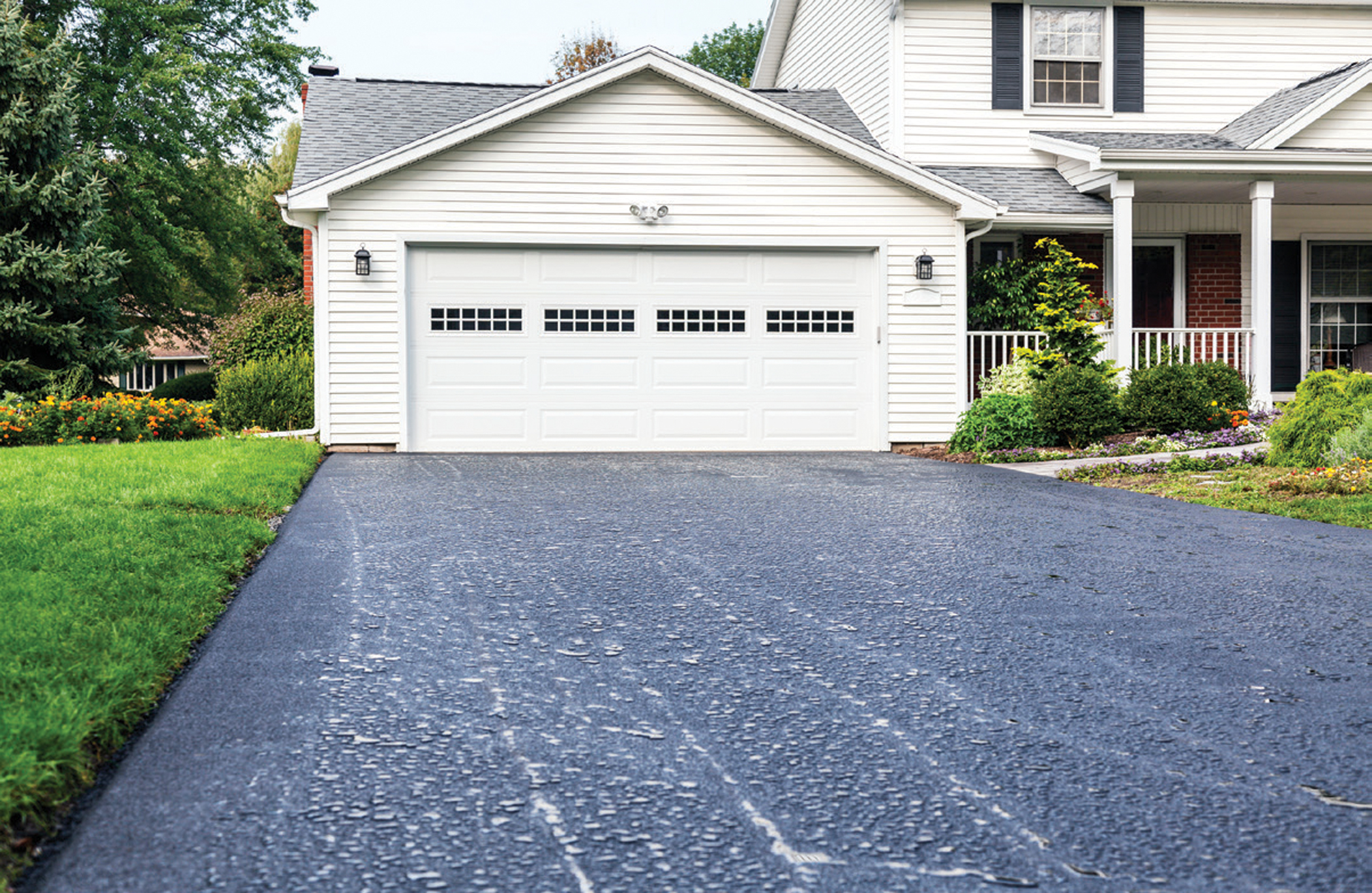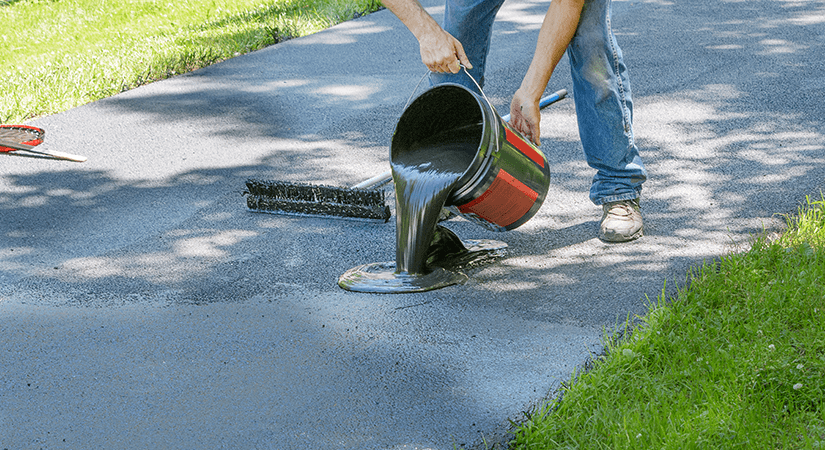Renew Your Property with Regrading and Asphalt Sealing Techniques
Renew Your Property with Regrading and Asphalt Sealing Techniques
Blog Article
Warm Mix Asphalt: A Lasting Service for Pavement
Warm Mix Asphalt (HMA) has actually emerged as a leading lasting choice for pavement solutions, using a myriad of ingenious modern technologies and ecological advantages. As the demand for environmentally friendly construction techniques grows, discovering the nuances of HMA's sustainability can supply valuable insights right into the future of pavement services.
Ecological Advantages of Hot Mix Asphalt

Moreover, Warm Mix Asphalt helps to alleviate urban heat island impacts. Its dark shade soaks up sunlight, lowering the amount of warm mirrored back into the environment contrasted to lighter-colored pavements. This can reduce ambient temperature levels in city areas, reducing the need for a/c and inevitably decreasing power intake.
In addition, Hot Mix Asphalt adds to enhanced stormwater monitoring. Its permeable nature enables water to recharge and infiltrate the pavement groundwater products, lowering runoff and the risk of flooding. These environmental benefits make Hot Mix Asphalt a sustainable choice for paving highways and roadways.
Energy Performance in HMA Manufacturing
Is power performance a critical variable in the manufacturing of Warm Mix Asphalt (HMA)? Definitely. Power plays a significant role in the manufacturing of HMA, influencing both cost and environmental sustainability. One key element of energy performance in HMA production is making use of cozy mix asphalt (WMA) innovations (angled parking). WMA allows for the blending and placement of asphalt at reduced temperature levels compared to traditional hot mix asphalt, causing lowered power consumption throughout manufacturing. This procedure not just reduces fuel usage however likewise lowers greenhouse gas exhausts, making it a much more eco-friendly choice.
Furthermore, improvements in plant technologies have resulted in more energy-efficient HMA production procedures. Modern plants are made with features like recycled asphalt pavement (RAP) handling capabilities, efficient burner systems, and boosted insulation, all adding to energy savings. By enhancing energy use in HMA manufacturing, the sector can reduce its carbon footprint while maintaining top quality sidewalk materials. Energy effectiveness is, consequently, an important factor to consider in making sure the sustainability of Hot Mix Asphalt manufacturing.
Recyclability of Hot Mix Asphalt
The recyclability of Warm Mix Asphalt (HMA) is an essential element of its sustainability and long-lasting environmental effect. HMA is just one of the most recycled products in the USA, with over 100 million tons of redeemed asphalt sidewalk (RAP) being reused annually in new sidewalk construction. Reusing HMA provides a number of environmental advantages, such as reducing the requirement for virgin products, lowering energy usage throughout production, and decreasing the quantity of waste sent out to landfills.
The procedure of recycling HMA entails crushing the existing sidewalk, squashing it right into smaller sized pieces, and mixing it with new accumulation and asphalt binder to develop a recycled mix. On the whole, the recyclability of HMA plays a significant duty in promoting lasting practices within the sidewalk industry.

Long-Term Performance of HMA
Asphalt pavements show durability and durability over an extensive duration, showing the long-term efficiency of Hot Mix Asphalt (HMA) In addition, developments in HMA innovation, such as the use of polymer-modified binders and cozy mix asphalt, have additionally improved the longevity and longevity of HMA pavements. By prioritizing quality building and construction and maintenance methods, HMA continues to show itself as a cost-effective and sustainable option for lasting pavement framework.

HMA: Resilience and Sustainability
Demonstrating both toughness and sustainability, Hot Mix Asphalt (HMA) has ended up being a cornerstone in the building and construction of lasting sidewalk frameworks - angled parking. HMA's durability stems from its capability to endure heavy tons, extreme climate condition, and high traffic quantities, making it a trustworthy choice for roads, freeways, and airport terminal runways. The structure of HMA, which typically includes aggregates, binder, and filler, plays a critical role in boosting its durability and resistance to deterioration
Moreover, HMA's sustainability depends on its recyclability and energy-efficient production process. The capability to recycle redeemed asphalt sidewalk (RAP) in brand-new HMA mixtures lowers the demand for virgin products and lessens the environmental effect of sidewalk building and construction and maintenance. In addition, the power performance of generating HMA depends on its lower blending temperature levels compared to other sidewalk products, bring about decreased energy consumption and greenhouse gas discharges.
Verdict
Finally, warm mix asphalt (HMA) supplies a sustainable service for pavement with its eco-friendly qualities. HMA's recyclability, energy performance in manufacturing, and lasting longevity make it an eco-friendly selection for roadway construction. By conserving all-natural sources, minimizing waste, and lowering greenhouse gas emissions, HMA plays a hot mix asphalt vital role in advertising sustainability in framework growth. Its ability to reduce urban warmth island effects further emphasizes its relevance in producing resilient and environmentally aware sidewalk systems.
HMA is one of the most recycled products in the United States, with over 100 million lots of reclaimed asphalt sidewalk (RAP) being reused every year in new pavement construction.The procedure of reusing HMA involves grating the existing sidewalk, crushing it right into smaller sized items, and blending it with new aggregate and asphalt binder to develop a recycled mix.Asphalt pavements demonstrate toughness and resilience over an extensive duration, reflecting the long-lasting efficiency of Warm Mix Asphalt (HMA) Furthermore, improvements in HMA technology, such as the use of polymer-modified binders and cozy mix asphalt, have additionally boosted the sturdiness and durability of HMA sidewalks. The ability to reuse recovered asphalt sidewalk (RAP) in new HMA blends reduces the demand for virgin products and decreases the environmental impact of pavement building and construction and maintenance.
Report this page